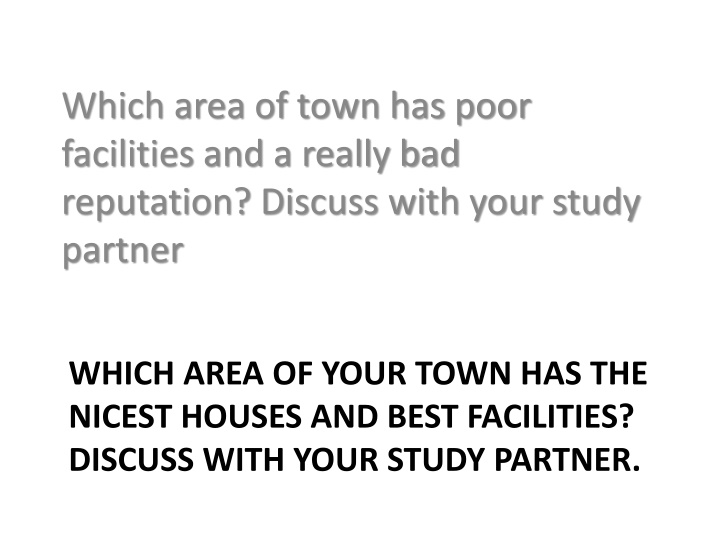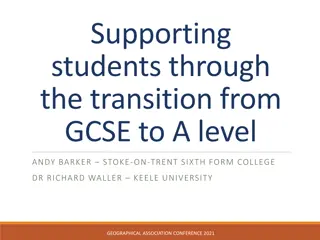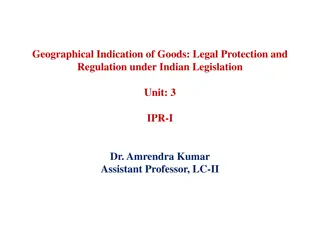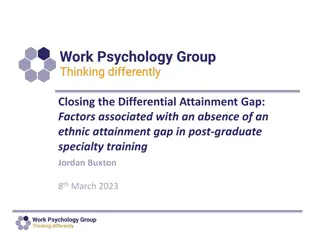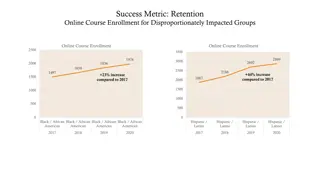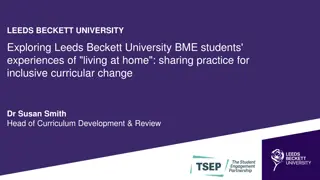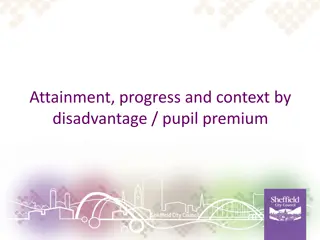Impact of Geographical Location on Educational Attainment
The geographical location plays a significant role in educational success, with certain areas experiencing lower quality facilities and reputation. Factors like social class and deprivation impact education outcomes, as seen in performance indicators and school statistics. Patterns reveal failing schools often located in inner cities, highlighting disparities in educational opportunities based on locality. Government initiatives aim to address these disparities through targeted interventions. Explore the complex relationship between location and educational attainment.
Download Presentation

Please find below an Image/Link to download the presentation.
The content on the website is provided AS IS for your information and personal use only. It may not be sold, licensed, or shared on other websites without obtaining consent from the author.If you encounter any issues during the download, it is possible that the publisher has removed the file from their server.
You are allowed to download the files provided on this website for personal or commercial use, subject to the condition that they are used lawfully. All files are the property of their respective owners.
The content on the website is provided AS IS for your information and personal use only. It may not be sold, licensed, or shared on other websites without obtaining consent from the author.
E N D
Presentation Transcript
Which area of town has poor facilities and a really bad reputation? Discuss with your study partner WHICH AREA OF YOUR TOWN HAS THE NICEST HOUSES AND BEST FACILITIES? DISCUSS WITH YOUR STUDY PARTNER.
What are the effects of geographical location on educational attainment? There is a relationship between where a child lives and his or her educational success
Sociological Targets To recognise that locality can have an impact on GCSE grades. To understand that wealth tends to be located within certain areas. To recognise that the study of locality and its impact on education is a study on the impact of social class and social deprivation on education.
Education statistics Data is gathered on all aspects of schools. average class size pupil teacher ratios, unauthorised absenteeism, exclusions (permanent and fixed term), numbers of pupils who receive free school meals, results in public examinations These are used as performance indicators of how successful the school is
In Ilsham Primary school 96% gain level 4 in English In Ellacombe primary school this is 64% Free school meals: 13% of Torbay pupils are eligible- Higher than national average and centred around particular areas. Earnings: 40% of people in work earn less than 250 per week ie 13,000 per year (compared with 30% nationally) Furthermore, Torbay is the 3rd most deprived in South West (of all 45 authorities); Torbay is 14th most deprived of all unitary authorities (of 46) http://www.telegraph.co.uk/education/educationnews/113 75644/GCSE-performance-tables-Number-of-failing- schools-doubles-in-a-year.html
What patterns emerge? Failing schools are usually inner city schools. Inner cities are areas where poor people, some ethnic minorities and recent immigrants usually live. The government is dealing with the problem by closing such schools or targeting them for action. Middle class parents have the economic power to buy houses in the catchments of schools with reputations for good results or to find other ways of avoiding sending their children to schools with low attainment and poor results.
League Tables Margaret Thatcher's Conservative government introduced examination league tables to the UK for secondary schools in 1992. In 1997, they were introduced for primary schools as well. The league tables were printed in newspapers and available on the Internet Herbert and Thomas (1997) who found that the introduction of parental choice had a polarising effect on schools. It created a culture in which schools could be seen as 'good' or 'bad'.
Sociological commentary Diane Reay (2004) - certain secondary schools and certain groups of children come to be demonised. Middle class parents will send their children elsewhere to be educated. Lucey found that working class parents do not live in the catchment areas of high achieving schools, but if they did, they found it difficult to get places for their children. Stephen Gorard (2005) studied 124 secondary schools in Yorkshire and discovered that schools have a limited effect on pupils compared to outside factors such as poverty. Alan Smithers and Pamela Robinson (2005) found that teachers only work in some inner city schools for very short periods of time, and then leave to work in less challenging schools in suburbs.
Questions 1. Where are failing schools often geographically located? 2. What are the two main strategies used by government to deal with failing schools? 3. How are middle class parents able to avoid sending their children to failing schools? 4. Why do middle class parents avoid failing schools? 5. What impact do the examination results of local schools have on the price of houses in an area?
Schemes to address problems These include EAZ (Education Action Zone) EiC (Excellence in Cities) City Academy programme These schemes have been given massive funding. In 2003/4, 350 million was allocated to the projects which have seen limited success
What are city academies? The Thatcher Government of the 1980s sponsored a programme of school renewal and improvement in inner city areas known as City Technology Colleges. Since 2000, the term City Academy was used to describe schools that are publicly funded, but not governed by any local authority. These schools are independent of state control. They were designed to deal with the problem of poorly achieving inner city schools, many of which have been closed and converted into academies. By the mid 00s, there were about 50 Academies, but the Labour Government committed itself to opening a further 150 by 2010.
Furthermore Academies can exclude challenging pupils and these students attend other inner city schools. Academies can select up to 10% of their pupils and They do not have to follow National Curriculum.
However The Academies cost large sums to start up Some sponsors have been given government grants to fund their academies. Private sponsors are given considerable control over the schools in return for investment of money. The quality of the actual results are the subject of debate, with the government suggesting that they are excellent and critics pointing out that they remain below the average figures for the whole of the country.
Questions 1. Why was the Academy programme set up? 2. Why is the Academy programme controversial? 3. What are the advantages of Academies? 4. What are the disadvantages of Academies?
Habitus Pierre Bourdieu uses the concept of habitus look at how the culture of the area you live in and the people you live amongst affects the way that you think about and see the world.
Sociological commentary Research in Scotland (2003) has shown that 83% of children brought up in middle class families expect to go to university. On the other hand, only 41% of children from lower class families expect to go to university. Archer and Yamashita (2003) - Year 11 pupils in a deprived inner London school and discovered that despite the high opinion and efforts of teachers, pupils often had a sense of 'not being good' enough for higher education Forsyth and Furlong (2000) in Scotland discovered that although students from deprived areas may go to university, they are not from the most deprived families and often come from the wealthiest families in those communities.
Questions 1. What problems of habitus may limit the success of working class children? 2. What practical problems prevent children in poorer areas from achieving as well as wealthier students? 3. Are examination results the best way of telling the differences in the quality of education provided between schools?
Summary of key points There is a link between the area in which a child lives and examination grades. In Britain, people tend to live in geographical areas that reflect the quality of housing available. In urban or city areas, schools serving areas that experience poverty and deprivation have significantly lower examination success rates than schools serving wealthy areas.
Create a poster to explain how location affects attainment. Use no more than 20 words.
Independent study Add to your notes by using the textbooks in the LRC and in your Sociology department. Use the e-book on the NGFL-Cymru website for more detailed notes and explanations.
